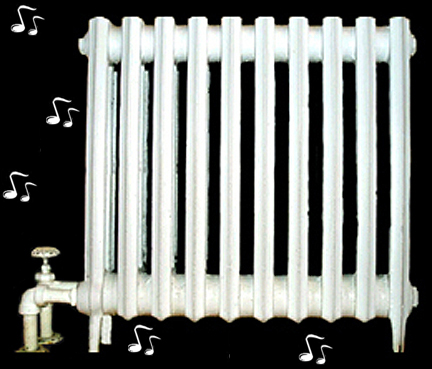During the cold weather months of 1942 to 1950, my family regularly awoke each morning to a clanging sound vastly different from that of an alarm clock. Our small rented Watauga Avenue apartment contained steam heat and the noise was emanating from one or more of the radiators.

Although the racket was a bit bothersome, it was comforting to know that the atmosphere would soon be toasty warm. Steam heat was wonderful. Ernest Green, the apartment custodian, made his early morning excursion into the cold, damp and dimly lit rodent-infested basement long before residents crawled out of their cozy beds. The caretaker’s mission was to get heat flowing from the coal-fired furnace to the large apartment complex. As steam circulated to the building, some radiators began making a “hammering” or “knocking” noise, sometimes being quite loud.
Steam systems generally had one pipe with the dual purpose of supplying the radiator with steam and providing for condensate to return to the boiler. Torpedo shaped vents hissed each time steam pressure was released. Three malfunctions – improperly sloped piping, steam valve not fully open and defective or plugged steam valve – orchestrated these annoying early-morning “radiator recitals.”
Drain piping was supposed to be slanted toward the boiler supply valve to allow condensate to completely drain from the radiator. When steam flowed into a unit, any cool water present would forcefully collide with hot steam, producing the aggravating noise. An age-old trick was to place wooden blocks under the opposite end of the radiator to insure adequate slope for condensate removal. Radiators were generally located under a window where heat loss was the greatest. They were usually about the same width as the window, flush with the windowsill and approximately 2.5” from the wall.
A 1947 booklet titled, “1003 Household Hints and Work Savers,” offers some practical suggestions for saving on heating bills. The publication said to keep radiators clean to insure maximum heat from them. The best way to clean one was to hang a damp cloth behind it and use the discharge end of a vacuum cleaner to blow dust off the fins onto the cloth. Another trick was to “Go over your radiator with an oiled cloth to prevent rusting, save paint and increase heat efficiency.” An added suggestion was to leave the radiator full of water during warmer months: “This water cannot rust the radiator because it is deoxygenated.”
The brochure went on to say that bronze or aluminum paints should not be used because they could reduce heat output by 10%. Instead, dark colored oil based paints were recommended as the best choices. Cast-iron radiators became a common fixture in urban schools during the first half of this century. They were purposely oversized to compensate for classroom windows that were partially left open for ventilation.
I became quite familiar with steam heat since we had radiators at school – West Side, Henry Johnson, Junior High, Science Hill and even my old University of Tennessee dorm, Melrose Hall. Steam systems eventually gave way to hot water ones and then to air units that allowed hot air to flow from a coal fired furnace to individual rooms via floor registers. Many area folks can remember when these were popular.
For the most part, the nostalgic early morning “radiator recitals” have been silenced by technology.

Comments are closed.